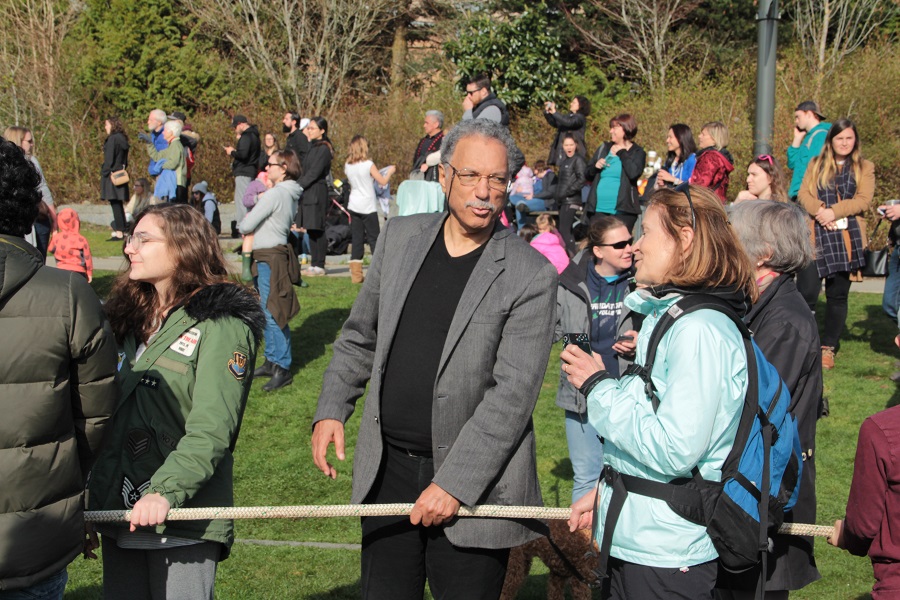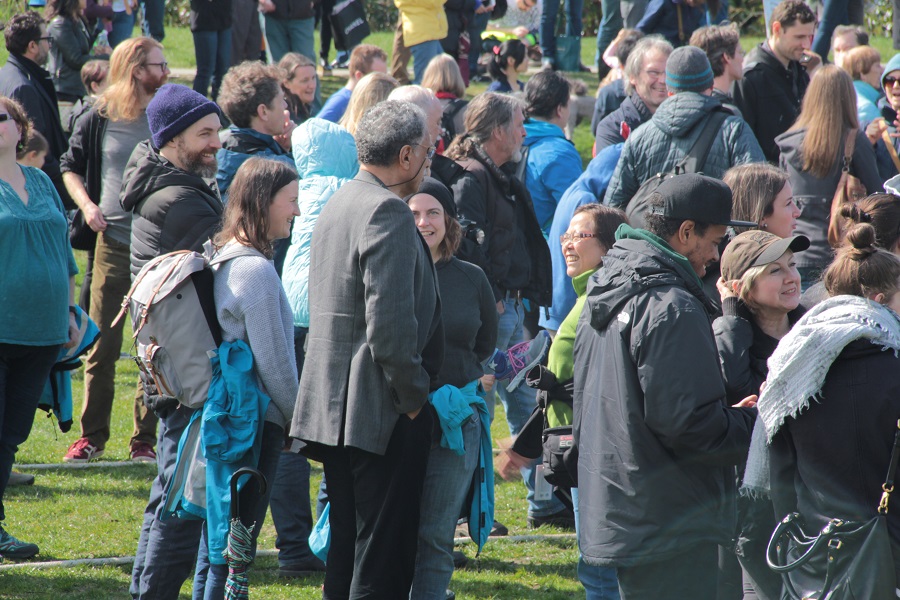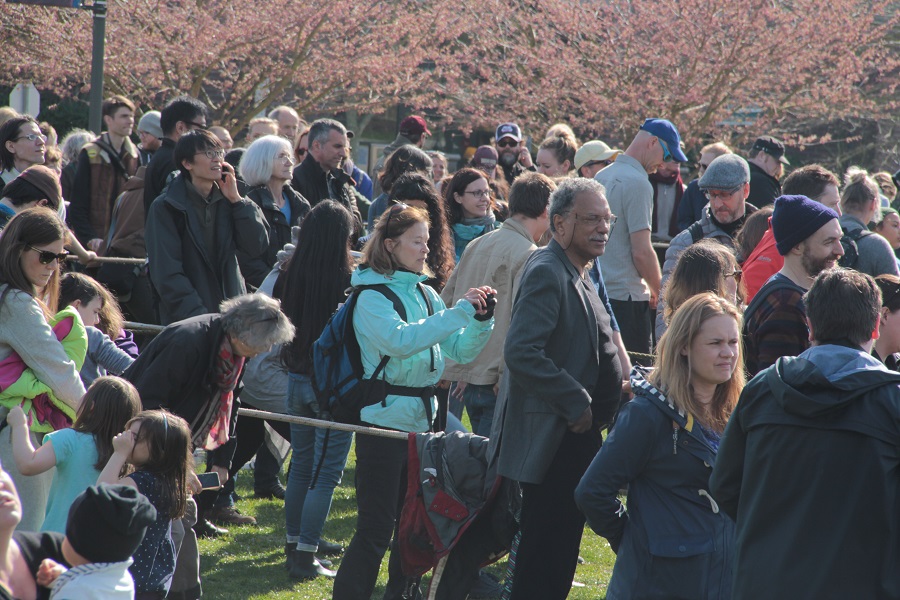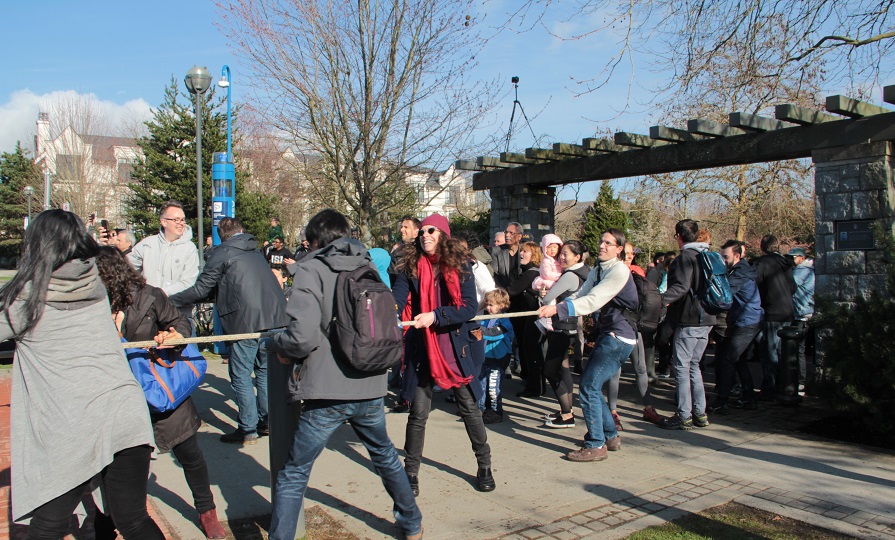Text by Daniel Pauly
On April 1, 2017, a 17 m totem pole was raised at the south end of the University of British Columbia’s Main Mall. It is the Reconciliation Pole carved by Haida master carver and Hereditary Chief James Hart.
Hundreds of Vancouverites gathered for the event, which started at 1 p.m. with speeches by various First Nations dignitaries and dances. It was only shortly before 5 p.m. that the crowd -to which I belonged- on the small amphitheater to the south of the pole, was called on to tighten up the ropes that were laid along the field and connected to the semi-raised pole which was still resting on scaffolding.
We had heard nothing of the speeches (UBC apparently does not know about really loud loudspeakers), but our crowd had waited to lift the totem pole and we were going to lift it up, long speeches or not. It took us only 10 minutes to do the job, pulling very hard until the heavy pole stood straight. When it stood, I had tears in my eyes and I think many people around me were similarly moved.
The Reconciliation Pole is different from traditional Haida poles: it has, near the centre, a representation of a house, symbolizing the residential schools that were designed to break the spirit of First Nation children. Into this house, thousands of copper nails were hammered into the wood, one for each of the children who died of broken hearts, neglect and abuse while at a residential school.
- Photo by Nicolas Bailly
- Photo by Nicolas Bailly
- Photo by Nicolas Bailly
- Photo by Nicolas Bailly
- Photo by Nicolas Bailly
- Photo by Nicolas Bailly
I cried because, for the first time, I was doing more than just ‘witnessing.’ From 2008 to 2015, a Truth and Reconciliation Commission (TRC) set up by the Canadian Government documented the multi-decade horror that these residential schools were. They collected as many testimonies from survivors as possible and derived policy recommendations for the future. As a (minor) part of its operation, the TRC named about 20 honorary witnesses from all around Canada – of which I was one – to participate in its work.
As such, I participated at harrowing events in Vancouver, Toronto, and Ottawa where residential school survivors told their stories. Throughout, I felt like a fraud because, as a scientist, I thought I could do nothing much to advance the TRC’s cause. Even my life experience did not match those of other honorary witnesses that included an Auschwitz survivor, a survivor of the genocide in Rwanda, and refugees from various countries. But pulling one of the ropes that lifted the Reconciliation Pole felt right, even if (or particularly because) I was only one in several hundred people that did the pulling on that day.
Now, I pass by that pole every morning as I go to work. The other day, I heard a Canadian of Korean ancestry telling her daughter what this pole meant and that what First Nations experienced was what Koreans also experienced when their country was a Japanese colony. I thought she was right. Moreover, she reassured her daughter that, fortunately, this was over.
The Reconciliation Pole is doing its job.








